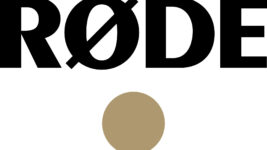News
1 Apr 2019
AVD Give it a Big Bash with EAW’S Radius

Subscribe to CX E-News
NEWS
AVD Give it a Big Bash with EAW’S Radius
by Fraser Walker.
EAW created a stir in the live audio market in 2013 with the release of its flagship adaptive Anya system.
Picking up where Martin’s MLA left off, Anya was completely electronically steered thanks to its 22 individual transducers fed from 22 channels of onboard DSP and amplification per cabinet. Even six years after its release, Anya is arguably still the most technologically advanced large format PA to date.
Whilst EAW has proven Anya’s technology in the hotly contested field of touring and festival production, the fact remains that the adaptive series is inaccessible to a large proportion of production companies and venues by means of scale and cost.
Thankfully, EAW’s Radius series has inherited some DNA from its concept driven sibling to deliver functionality well above its weight.
With Radius and its accompanying Mosaic software, EAW has managed to rectify a major issue facing this sector of the market: line arrays are not a point and shoot solution, yet many are marketed at end users who cannot justify the design time and training on the CAD software required to deploy them correctly.
Coupling this frustration is that for many operators, there are no venue drawings supplied in advance anyway; you get the gear in the room on the day of the show and do the best you can.
Mosaic has basic venue templates and a touch-focused interface that could see most venues drawn in
under 10 minutes with a laser distometer and an iPad. A quick optimise feature with sliding scales for SPL and coverage will give you ideal trim heights and inter-cabinet splay angles depending on the desired result.
It is line array optimisation for the point-and-shoot crowd.
While 15 minutes seems a reasonable time allowed for system design, such luxuries do not always exist. Enter the OptiLogic system built into every cabinet.
Infrared sensors at the top and bottom of each cabinet are used to identify their position in an array. The inclinometer will ascertain the inter-cabinet angles and the onscreen menu of any cabinet can be used to enter the near and far throw distance and desired tuning. OptiLogic will then optimise the array wavefront to suit – literally point-and-shoot.
I seem to be coming back on my words here, but the trick here is that the Radius array knows what it is comprised of, and what the desired outcome is.
To complement the rear panel interface, every cabinet is equipped with Dante ports. Enabling wireless control with Dante has been a source of much apprehension in the past, and EAW have cleverly mitigated this with a third network port, multicast filtered and dedicated for a wireless router or access point.
Once wireless, Mosaic on iPad becomes a full functioning system remote control, able to process arrays as a whole or grant access to cabinets individually for more granular control. Of course Dante is not required for Mosaic remote control – but it will be a welcome addition for many users.
Audio Visual Dynamics has taken an inventory of 12x RSX208L and 4x RSX18F and have recently been putting it through its paces on the Big Bash League Cricket matches held at Marvel Stadium.
The system was comprised of 4x ground stacks of 3x RSX208L over 1x RSX18F, secured via an inverted flybar. The groundstacks were placed in each quadrant of the field and brought the impact of the action down to the lower levels, with the stadium PA covering intelligibility above the third floor.
Tim Murrell, Operations Manager for AVD at Marvel Stadium has kept the initial deployment very simple, however the intuitive Radius system is already delivering benefits.
“We ran each stack as analogue input, and controlled DSP via the back panel interface. It was incredibly simple to setup. The rear menu system enables you to set near and far throw distances, as well as the delay required to align to the stadium system.”
Thanks to the OptiLogic IR sensors, the delay time was automatically applied to each cabinet in the array, and the inclinometer will flip the on screen display when the cabinets are inverted for groundstacks.
“After receiving some feedback after the first game we realised we needed a bit more level and intelligibility on the third level, and adjusting the far throw distance from 40m to 50m achieved this effortlessly.”
AVD’s previous solution was a small format array, with multiple cabinets linked per amplifier.
Having granular amplification and DSP has enabled a much smoother distribution of SPL across the listening area, not to mention they no longer need to run 3-phase power out to the amp racks. Each stack is idling away on a single 10amp supply.
For all the smart and automatic features, there is still scope for experienced operators to gain the best results from Radius by using more detailed room modeling in EAW’s Resolution software and dual channel FFT analysers for optimisation.
However where time or user experience does not permit such activities – EAW has delivered a powerful series of clever loudspeakers that work together to achieve an impressive end result from minimal user input.
News from CX Magazine – April 2019 CX Magazine is Australia and New Zealand’s only publication dedicated to entertainment technology news and issues – available in print and online. Read all editions for free or search our archive www.cxnetwork.com.au
© CX Media
Subscribe
Published monthly since 1991, our famous AV industry magazine is free for download or pay for print. Subscribers also receive CX News, our free weekly email with the latest industry news and jobs.








